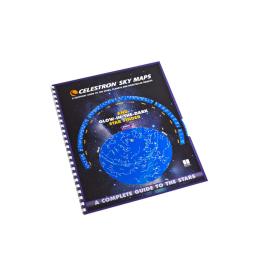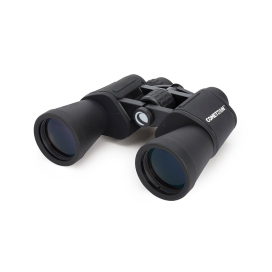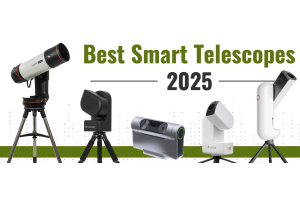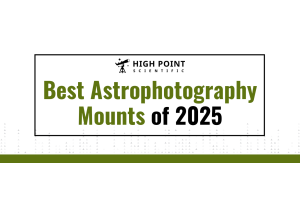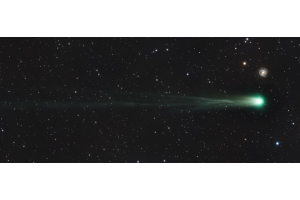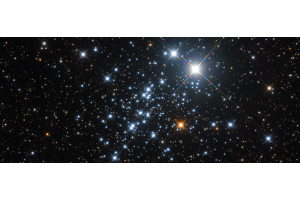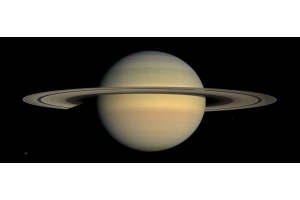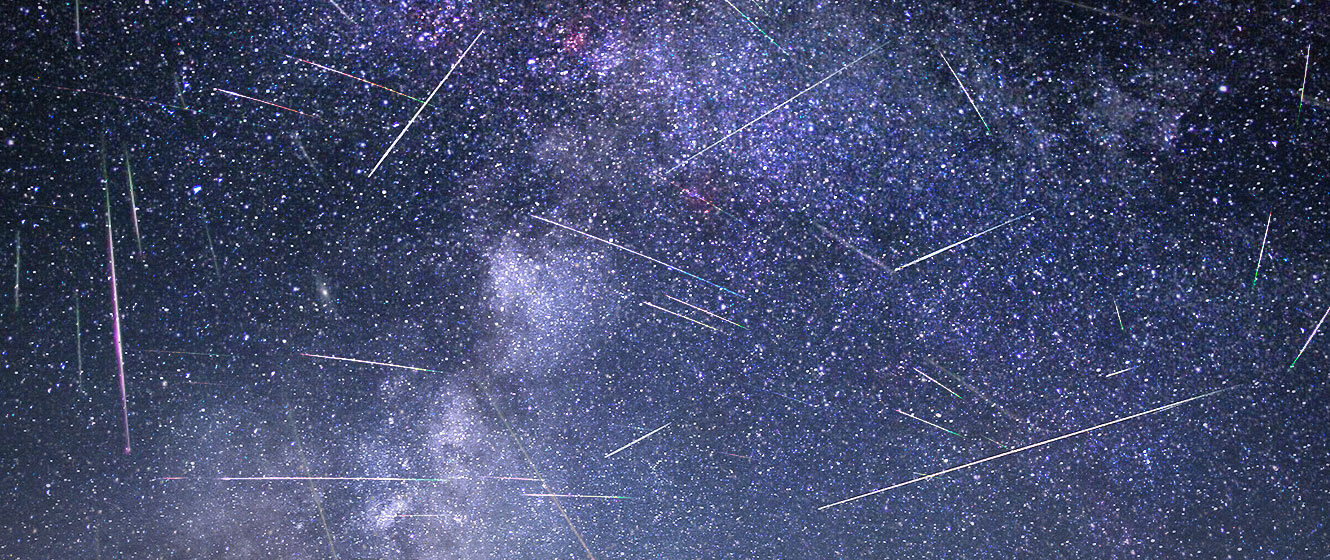
We’ve all seen them - an apparently random streak of light across the night sky that often vanishes as suddenly as it appears. Meteors, or shooting stars as they’re popularly known, are nothing more than tiny clumps of dust and rock particles, no larger than an apple seed, burning up in the Earth’s atmosphere at thousands of miles per hour. But are they truly random? When is the best time of year to see a shooting star or two?
Meteor showers occur when the Earth passes through the trail of dust that’s usually left behind by a comet as it orbits the Sun. As the Earth moves along in its orbit, it intersects the comet’s orbit and passes through the dusty debris. As a result, we see more shooting stars for the amount of time it takes to pass through the debris. In all, there are over 100 officially recognized showers, but only a handful are truly noteworthy.
What You Need to Know - Tips and Terms for Beginners
- Although you can see shooting stars from almost anywhere, you want to try and find a safe, dark location, far from the lights of a town or city. Many meteors may be bright, but there are just as many that are too faint to be seen from the light-polluted skies of suburbia.
- Regardless of where you are, give your eyes time to adapt to the dark. This can take anything up to about thirty minutes if you’re stepping out from a brightly lit interior, but when your eyes are properly adapted you’ll see more of the fainter meteors.
- Once your eyes are properly dark-adapted, you’ll want to keep them that way. Looking at any bright light can instantly ruin your night vision, so make sure to get yourself a red flashlight. Red light doesn’t affect your eyes the way white light does, and as long as the flashlight isn’t too bright, you should be able to avoid dazzling yourself.
- One of the best things about meteors is that you don’t need any equipment to observe them. In fact, almost any kind of equipment is a hindrance more than a help. Remember that meteors can appear almost anywhere, but if you use binoculars or a telescope, you’re limiting your view to just a small area of the sky. You’ll see more of the sky with just your eyes, so even if you’re looking in the wrong direction, you might still catch one or two with your peripheral vision.
- Beware the Moon! It might look pretty, but when the Moon is between first and last quarter (anywhere from a half Moon in the evening sky, through full Moon to a half Moon in the morning sky) it can considerably brighten the sky. This has the effect of drowning out the fainter meteors. A crescent Moon isn’t typically a problem because it’s not so bright and is often only visible either before or after the darkest part of the night.
- A shower’s radiant is the area of the sky from which the meteors appear. A shower is typically named after the constellation from which they seem to originate from (eg, the Leonids have their radiant in Leo) but occasionally a shower is named for the nearest bright star instead (eg, the Alpha Centaurids.)
- The zenith hourly rate (ZHR) is the number of meteors you could expect to see under ideal conditions. More specifically, this is the number you might see if the radiant were overhead and the skies were completely dark. In most cases, the radiant isn’t at its highest until the daylight hours and is rarely overhead. Consequently, the actual number of meteors you can expect to see will greatly depend upon the altitude of the radiant in the sky, the weather, and the phase of the Moon at the time.
January
The Quadrantids are named after a former constellation, Quadrans Muralis, and have become increasingly active over the past few decades. Its zenith hourly rate can vary from year to year, with anything from 60 to 200 meteors potentially being visible. Its current average rate is about 110 per hour, but since that’s an ideal number, most of us will probably see around 23 instead.
This year could be a good one for the shower, as there’s a new Moon on the day before the shower’s maximum. You can therefore start looking as soon as the sky is truly dark (about two hours after sunset), with most meteors appearing to originate from a point roughly midway between the top of kite-shaped Bootes and the tail of Draco. The best time will be between around 1:00 a.m. and about two hours before sunrise, when the radiant will be rising over the northeastern horizon. Be on the lookout for fireballs as the shower can often produce a number of bright examples.
Quadrantids
- Active: Dec 28th - Jan 12th
- Maximum: Jan 3rd 15:40 ET / Jan 3rd 12:40 PT
- Moon: New Moon
- ZHR: 110
- Parent Object: 2003 EH (Asteroid)
- Radiant: 15:21h +49.5°
- Brightness: Bright
- Speed: Medium
February
After the Quadrantids in January, there’s something of a drought until April and, as such, there are no major showers in February or March. There is, however, the Alpha Centaurid shower which usually produces around 6 shooting stars an hour, but can produce up to 25.
Unfortunately, since the radiant lies in the southern constellation of Centaurus, it won’t rise over the horizon for observers in North America, making this a shower where you’ll miss out on seeing a number of meteors. If you want to try your luck, you’ll need to go outside a few hours before dawn (after the Moon has set and while the sky is still dark) and keep your eyes on the southeastern and southwestern horizons.
Alpha Centaurids
- Active: Jan 31st - Feb 20th
- Maximum: Feb 8th 02:00 ET / Feb 7th 23:00 ET
- Moon: First Quarter
- ZHR: 6
- Parent Object: Unknown
- Radiant: 14:04h -58.2°
- Brightness: Bright
- Speed: Fast
March
This month’s shower is similar to the Alpha Centaurids of February in that they only produce about six meteors an hour and the radiant is in a southern hemisphere constellation. In fact, although the shower is named for a star in Norma, its radiant actually lies in the constellation of Scorpius, and very close to Zeta Scorpii.
The problem this year is that the Moon is also a waxing gibbous and will drown out many of those meteors. To make matters worse, it won’t set until about 90 minutes before dawn, which is about the time the radiant will be highest over the southern horizon.
That being the case, you’ll have the best chance of seeing a few meteors about two to two and a half hours before dawn, when the Moon is setting and fairly low but the radiant is rising (albeit also fairly low!) Look toward the east-southeast and the south-southwest but be warned - at an average speed of 42.5 miles per second, these meteors are fast!
Gamma Normids
- Active: Jan 31st - Feb 20th
- Maximum: Mar 14th 18:00 ET / Mar 14th 15:00 PT
- Moon: Waxing Gibbous
- ZHR: 6
- Parent Object: Unknown
- Radiant: 16:24h -51.0°
- Brightness: Unknown
- Speed: Fast
April
Our second major shower of the year, the Lyrids are fairly active and, under ideal conditions, can produce about 18 shooting stars an hour. This year the Moon is a waning gibbous, which means it’ll still be above the horizon when the radiant is at its highest. Fortunately, the radiant will rise around 11:00 p.m., giving you about four or five hours before the Moon starts to pose a problem.
By that time, the radiant will be high above the eastern horizon, and looking towards the northeast and southeast will give you your best chance of seeing a few shooting stars.
Lyrids
- Active: Apr 14th - Apr 30th
- Maximum: Apr 22nd 15:00 ET / Apr 22nd 12:00 PT
- Moon: Waning Gibbous
- ZHR: 18
- Parent Object: C/1861 G1 (Comet Thatcher)
- Radiant: 18:09h +33.4°
- Brightness: Bright
- Speed: Medium
May
There’s good news and bad news for meteor watchers in May. The good news is that the Moon is a waxing crescent and will set fairly early in the evening, but the radiant for the Eta Aquarids won’t rise until a few hours before dawn. (Incidentally, Saturn appears a little way to the west, in neighboring Capricornus).
You could, of course, start looking for meteors during the previous evening or in the hours after midnight, with your best option being to look toward the northeast and southeastern horizons during those times. Under ideal conditions, you could see an average of 50 meteors an hour, but the shower has been known to produce anywhere between 40 and 85.
Eta Aquarids
- Active: Apr 19th - May 28th
- Maximum: May 6th 04:00 ET / May 6th 01:00 PT
- Moon: Waxing Crescent
- ZHR: 50
- Parent Object: 1P/Halley (Comet)
- Radiant: 22:32h -00.8°
- Brightness: Bright
- Speed: Fast
June
The June Bootids can be unpredictable at best. Historically, the shower has only produced about 5 or 6 meteors an hour, but it’s prone to sudden outbursts. For example, in 1916, 1921, 1927, and, most recently, in 1998 about 100 or more an hour were reported at various times during the shower’s maximum.
It’s anyone’s guess as to how many you might see this year; you could see 5 or 6, you could see more or you might not see any at all! On the plus side, these meteors are usually pretty bright and slow, making them easy to spot. There’s also a new Moon, so you needn’t worry about it brightening the sky.
Lastly, with the radiant located in Bootes (a constellation best seen in the spring and summer) you won’t have to stay up all night to see them. You can start looking a few hours after sunset on the 26th - at that time, the radiant will be high over the southwestern horizon, so keep your eyes toward the south and west.
June Bootids
- Active: Jun 2nd - Jul 2nd
- Maximum: Jun 27th 07:00 ET / Jun 27th 04:00 PT
- Moon: New Moon
- ZHR: Variable
- Parent Object: 7P/Pons-Winnecke (Comet)
- Radiant: 14:58h +48.0°
- Brightness: Bright
- Speed: Slow
July
With a zenith hourly rate of 25, the Southern Delta Aquariids is a fairly active shower, but they’re also known to be fairly faint. However, as the Moon is a waxing crescent during the shower’s maximum it will set early in the evening, making this a good year to try your luck.
This is one shower you can observe almost all night. The radiant rises a few hours after sunset and is due south at around 3:30 a.m. If you’re meteor watching during the evening of the 29th, then you’ll need to look towards the east and south. However, if you’re outside during the early hours of the morning on the 30th, then look towards the southeast and southwest.
Southern Delta Aquariids
- Active: Jul 12th - Aug 23rd
- Maximum: Jul 30th
- Moon: Waxing Crescent
- ZHR: 25
- Parent Object: 96P/Machholz (Comet)
- Radiant: 22:42h -16.4°
- Brightness: Faint
- Speed: Medium
August
The Perseid meteor shower is, arguably, the most famous of them all. It’s the one that gets all the attention in the media, and not without good reason. It’s one of the most reliable and productive showers of the year and is considered a highlight of the annual astronomical calendar.
Unfortunately, this year the Moon turns full on the 11th and will brighten the sky quite considerably during the shower’s maximum. It will also be rising a few hours before the shower’s radiant with the result that it will brighten the sky throughout almost the entire night. Try your luck a few hours before dawn, when the sky is still dark, the Moon is setting in the southwest and the shower’s radiant will be high in the northeast.
Perseids
- Active: Jul 17th - Aug 24th
- Maximum: Aug 12th 21:00 ET / Aug 12th 18:00 ET
- Moon: Waning Gibbous
- ZHR: 100
- Parent Object: 109P/Swift-Tuttle (Comet)
- Radiant: 03:13h +58.1°
- Brightness: Medium
- Speed: Fast
September
There’s another shower that has its radiant in Perseus, but unlike the primary Perseid meteors of August, the September Epsilon Perseids are fairly minor. Unfortunately, this shower does share one characteristic with its more popular cousin: the phase of the Moon when the shower is at its maximum.
Just as the Moon was full for the Perseids, so it is also full for the September Epsilon Perseids. In fact, it’ll turn full about eight hours after the shower is at maximum, making this a difficult shower to observe. You can either try your luck at about 90 minutes after sunset, when the sky is dark and the Moon is low, (but so is the shower’s radiant), or else at around 5:00 a.m., when the radiant is high over the south and the Moon is low in the west-southwest.
September Epsilon Perseids
- Active: Sep 5th - Sep 21st
- Maximum: Sep 9th 22:00 ET / Sep 9th 19:00 PT
- Moon: Full Moon
- ZHR: 5
- Parent Object: Unknown
- Radiant: 03:15h +39.7°
- Brightness: Medium
- Speed: Fast
October
Our fortunes change a little in October, as the Orionids reach their maximum on the 21st when the Moon is a waning crescent. This being the case, you could start looking for meteors from around 90 minutes to 2 hours after sunset or from around midnight, when the radiant is rising over the eastern horizon.
The meteors will appear to originate from a point close to Alhena (Gamma Geminorum) and you’ll need to look towards the northeast and southeast for your best chance of seeing a shooting star. Alternatively, rise early (around 4:30 a.m.) to see the shower when the radiant is high over the south-southeastern horizon. At that time, the Moon will be low in the east and the sky won’t be brightening for about another 60-90 minutes.
Orionids
- Active: Oct 2nd - Nov 7th
- Maximum: Oct 21st 14:00 ET / Oct 21st 11:00 PT
- Moon: Waning Crescent
- ZHR: 20
- Parent Object: 1P/Halley (Comet)
- Radiant: 06:24h +15.7°
- Brightness: Bright
- Speed: Fast
November
Like the Perseids, the Leonids have become a popular shower with the media, mostly due to the meteor storm of 1999. At that time, the shower produced roughly 1,000 meteors an hour, a hundredfold increase over the shower’s typical 10-15 meteors an hour. Unfortunately, despite the Moon being a waning crescent, we should have no expectations of seeing something similar this year.
Another potential issue is that the waning crescent Moon is in Leo this year, with both the Moon and the shower’s radiant rising in the east at around 1:00 a.m. All the same, you can start your observations in the evening hours once the sky turns dark, with the best opportunity coming at around midnight before the Moon makes its appearance.
Leonids
- Active: Nov 6th - Nov 30th
- Maximum: Nov 17th 19:00 ET / Nov 17th 16:00 PT
- Moon: Waning Crescent
- ZHR: 10 - 15
- Parent Object: 55P/Tempel-Tuttle (Comet)
- Radiant: 10:15h +21.8°
- Brightness: Bright
- Speed: Fast
December
The last major shower of the year is also, arguably, the finest. The media typically doesn’t give it as much attention as the summer’s Perseids, which is a pity as the Geminids can be more prolific and are also known to be quite colorful. Another big plus is that Gemini is a winter constellation and the radiant rises just a few hours after sunset.
This will give you a decent three or four hours to enjoy the shower without any interference from the Moon, which won’t rise until around 11:00 p.m. (and won’t be much of a hindrance until about an hour later). Keep looking toward the northeast and southeast for the best chance of seeing some shooting stars. The shower’s radiant is due south at around 2:00 a.m., but by that time the Moon will also be much higher in the sky.
Geminids
- Active: Dec 4th - Dec 20th
- Maximum: Dec 14th 08:00 ET / Dec 14th 05:00 PT
- Moon: Waning Gibbous
- ZHR: 150
- Parent Object: 3200 Phaethon (Asteroid)
- Radiant: 07:33h +32.4°
- Brightness: Medium
- Speed: Medium
NB: All source information and data has been taken from the International Meteor Organization’s 2022 Meteor Shower Calendar.
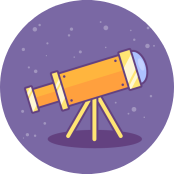
Questions? Contact Us!
Whether you're looking to expand your astronomy setup or simply wondering more about how to view any of the meteor showers listed above, our experts are happy to help! Contact us today with your questions.






